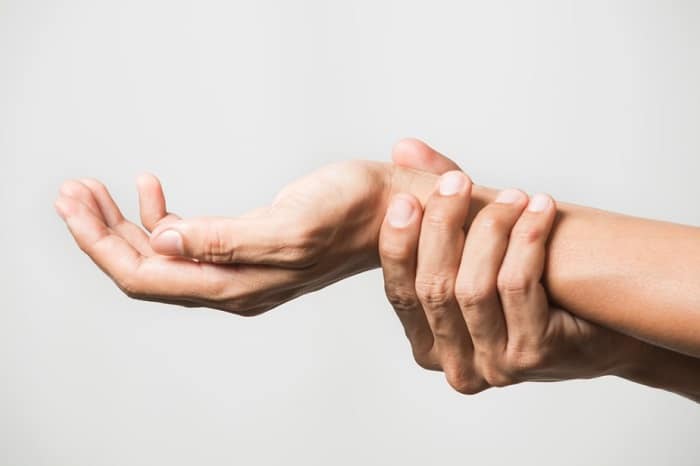SHARE THIS ARTICLE

General Public
What is Upper Limb Spasticity?: Symptoms, Causes & Treatment
Aug 8, 2018
*Disclaimer: Information on Maylips.com is provided for informational purposes only. Self-medication is strictly prohibited. All aesthetic procedures should be provided by the licensed healthcare specialist after the consultation with the personal therapist. The information in this article should not be used for prescribing any medication for the beauty injections.
All brand and medication descriptions in the article are based on the personal opinion and are not endorsed by Maylips.com. The article content was not reviewed for medical validity. Use this article for information and not for a final decision on the procedure.
What is upper limb spasticity?
Upper limb spasticity, also sometimes referred to simply as ULS, is a condition that affects approximately 12 million people in the world. It affects movement in the arms, including in the elbow, wrist, and fingers, and essentially causes uncontrollable spasms in the muscles. ULS is a condition that is impacted by the nervous systems and causes muscles in the upper limbs to be stiff or continually flexed. While not life-threatening, ULS can be very painful and can severely impact a patient’s quality of life and make mundane tasks that require ease of mobility to become very difficult. In adults, upper limb spasticity is typically the result of an injury or medical event or develops due to a pre-existing medical condition. However, there are many treatment options available to patients that can help improve their ULS.
Symptoms
While ULS is often triggered by an injury or other medical event, the symptoms may not appear for weeks or even years and may present themselves very gradually. Most generally, the symptoms present themselves as tightness or spasms in the muscles of the upper limbs, and without treatment the muscles can feel as though they are frozen in place. This is why patients should be urged to speak to a physician as soon as spasms or tight limbs become an issue after a medical trauma that may cause upper limb spasticity.
Symptoms of upper limb spasticity include:
- Stiff muscles in the arms;
- Difficulty moving arms or performing activities that were once able to be performed;
- Uncontrollable twitches or movements of the upper limbs;
- Tightness in the muscles in the elbows, wrists, or fingers;
- Arms lock in uncomfortable or unnatural positions, such as pressed against the torso;
- Rotated shoulders;
- Bent elbows or wrists without command;
- Hands involuntarily clench into fists;
- Difficulty or pain when trying to straighten arms, elbows, wrists, or fingers.
Causes
Upper limb spasticity is caused when something occurs that interrupts the natural processes of the nervous system. As nerve cells are responsible for the communication of commands from the brain to various parts of the body, functionality becomes an issue when nerve cells are damaged. Muscles in particular are affected by the signals between the brain and the spinal cord, so when either the brain or spinal cord is injured, ULS may arise.
Causes of upper limb spasticity include:
- A stroke;
- An injury to the brain or spinal cord;
- Diseases that affect the nervous system, such as multiple sclerosis or cerebral palsy.
Treatments
Thankfully, there are treatments available that can help loosen the muscles and keep them from becoming too stiff, allowing more mobility in the upper limbs. Recommended treatment should be based on the severity of ULS and the overall health of the patient. No matter what treatment they receive, physical therapy and exercise is always important, as it helps prevent the joints and muscles from stiffening further, and promotes strength and flexibility.
Treatment options for upper limb spasticity include:
- Braces or splits – these prevent the muscles and joint from getting too stiff by holding them in their correct positions.
- Prescription drugs – drugs like diazepam (Valium), tizanidine (Zanaflex) are helpful because they force the muscles to relax.
- Intrathecal baclofen therapy (ITB) – delivers Baclofen to the intrathecal space of the spinal cord to correct nerve signals, thus preventing spasms.
- Botulinum toxin – Botox or Dysport injections directly into the upper limb muscles can help the stiff and contracting muscles relax.
- Surgery – if no other treatments work, connections between nerves or tendons and the spasming muscles may be cut.
Upper limb spasticity may improve with any of these treatments; however, patients often opt for Botox or other botulinum toxin treatments as the treatment is less likely to disrupt their daily routines.
*Disclaimer: Information on Maylips.com is provided for informational purposes only. Self-medication is strictly prohibited. All aesthetic procedures should be provided by the licensed healthcare specialist after the consultation with the personal therapist. The information in this article should not be used for prescribing any medication for the beauty injections.
All brand and medication descriptions in the article are based on the personal opinion and are not endorsed by Maylips.com. The article content was not reviewed for medical validity. Use this article for information and not for a final decision on the procedure.

